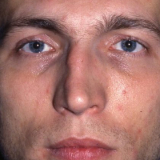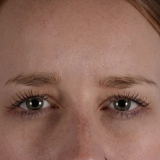For men and women who want to improve age-related facial sagging, face lift surgery is a popular option to tighten and contour the face. Before having a face lift, it’s a good idea to familiarize yourself with what the procedure involves, especially when it comes to recovery expectations. You’re likely to experience some degree of swelling after a face lift, although the degree and timeline of swelling can vary based on each person. Rest assured, any swelling will eventually go away on its own, and before long, you’ll be able to see your gorgeous, youthful-looking results.
The experienced board-certified plastic surgeons at Colorado Facial Plastic Surgery in Englewood, CO are highly skilled in performing face lift surgeries that deliver stunning outcomes. Keep reading to learn more about what to expect with a face lift, including how long any post-surgery symptoms, like swelling, may last.
Contents
How does a face lift work?
A number of face lift techniques are available depending on your cosmetic goals, and whether you want to address your entire face or target the mid-face, lower face, or neck. A full face lift is the most common method, as it can target signs of aging, including sagging skin, drooping jowls, and static wrinkles. First, your surgeon will make small incisions behind the hairline. Then, the underlying tissues and muscles are tightened and repositioned to help you appear tighter and more youthful. Once the extra skin is trimmed, the incisions will be closed with sutures. The entire procedure generally takes 2 – 4 hours, depending on the specific areas you want to target.
How long is face lift recovery?
Following face lift surgery, some downtime will be involved. In general, you’ll need to rest and avoid strenuous activity for the first 1 – 2 weeks. The full recovery can take up to two months. Initially, your face will be covered in protective dressings, but these bandages are usually removed within a couple of days. The first two weeks after surgery may involve swelling, bruising, and minor discomfort or pain as your face heals. After about 3 – 4 weeks, the swelling typically begins to lessen as your new facial contour becomes more apparent. By this stage, you may be able to return to many of your regular activities, as advised by your doctor.
How do you reduce swelling after face lift?
Swelling is a normal part of the post-surgery process that indicates that your body is healing. However, it’s understandable that you want your recovery to progress as quickly and easily as possible. Our team has a few tips to help reduce swelling after face lift in Englewood, CO.
- Use ice packs: Apply cold compresses to your face for about 20 minutes at a time to help reduce inflammation. Since the skin and tissue will still be delicate, take care not to leave the compresses in one spot for too long.
- Stay upright: It’s important to keep your head elevated, even when you sleep, as this position helps improve blood flow. Many patients achieve this by staying propped up with pillows or a recliner.
- Rest and proper nutrition are key: Your swelling will improve as your body naturally heals. This can only occur when you stay hydrated, eat nutritious foods, and give yourself plenty of time to rest. Your beautiful outcomes will be well worth it.
Refresh your appearance with face lift surgery in Englewood, CO
If you want to know more about looking years younger with face lift surgery, contact the expert team at Colorado Facial Plastic Surgery in Englewood, CO. We would be happy to review any concerns and discuss the face lift recovery process, such as how long any swelling may last. We are here to support you during every step of your cosmetic journey so you can have the smoothest possible experience.







